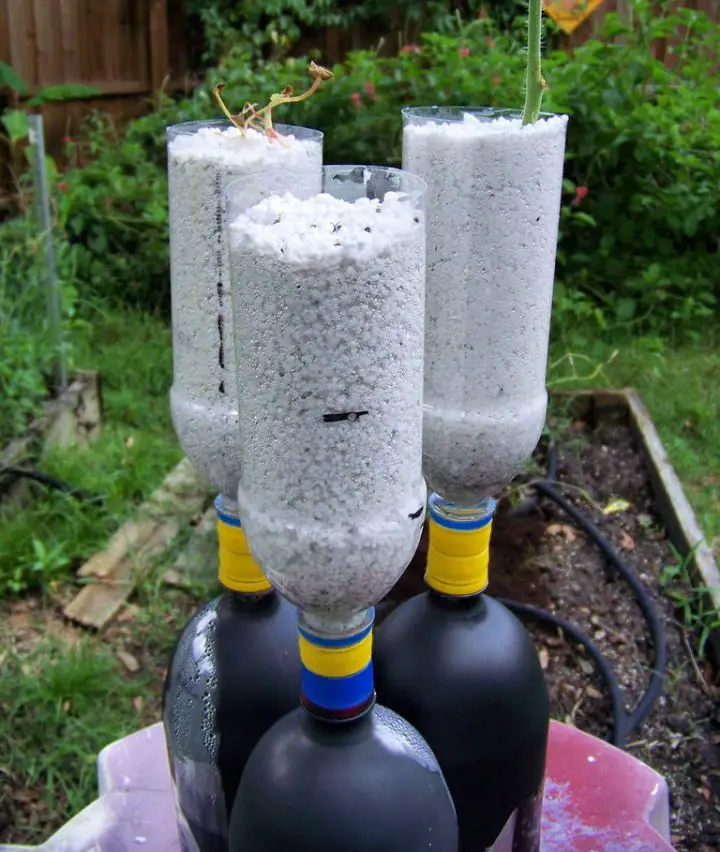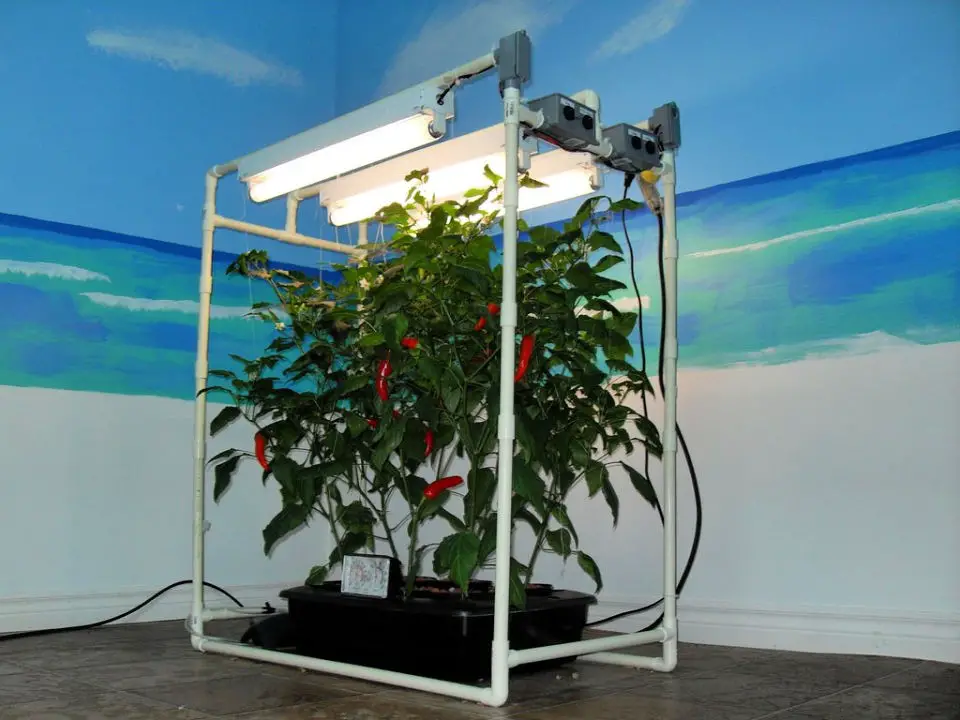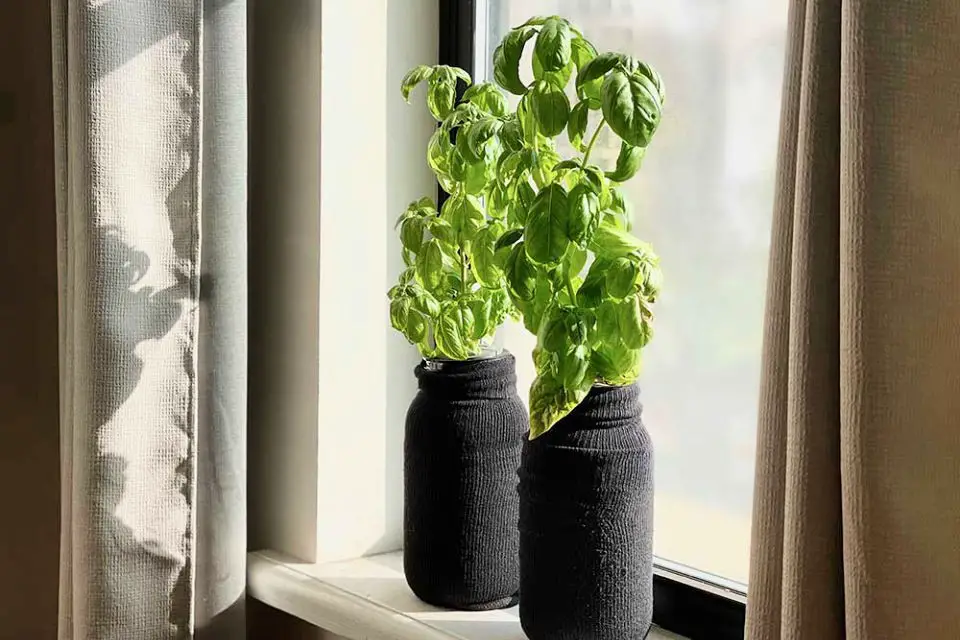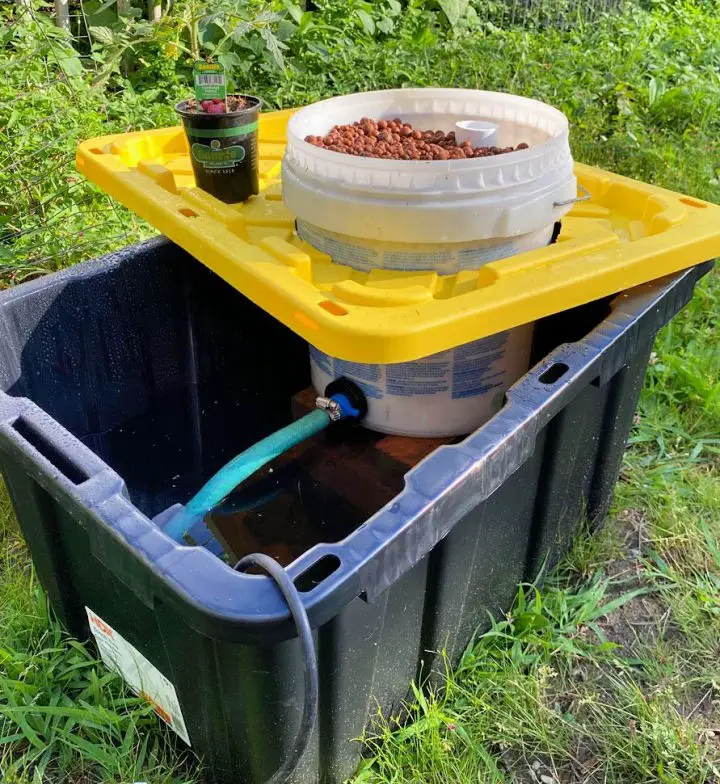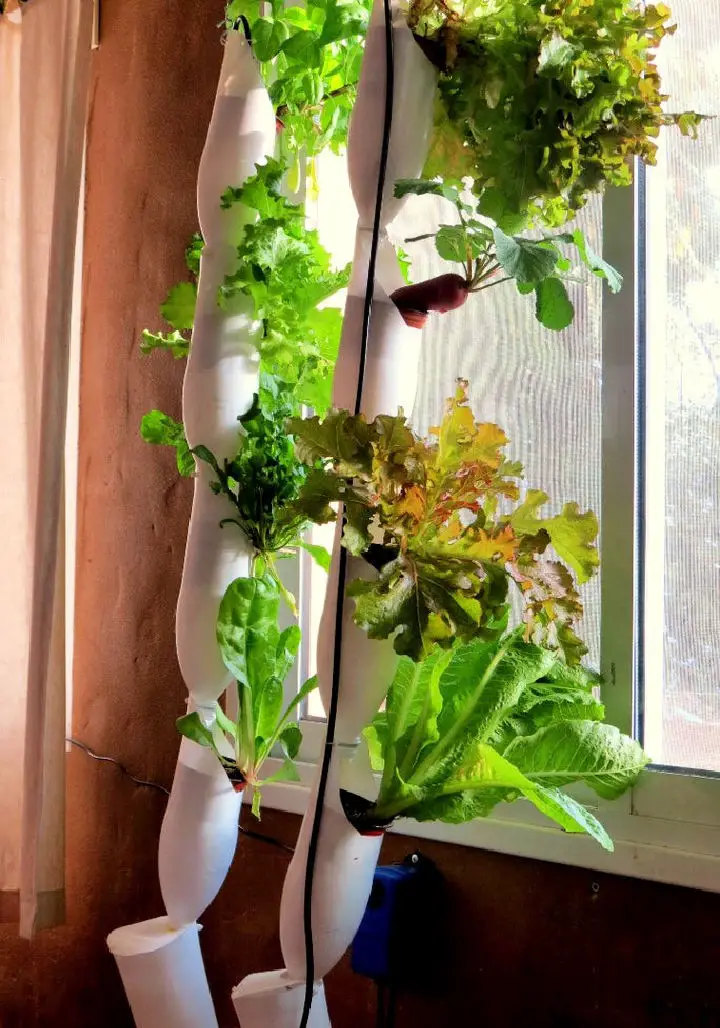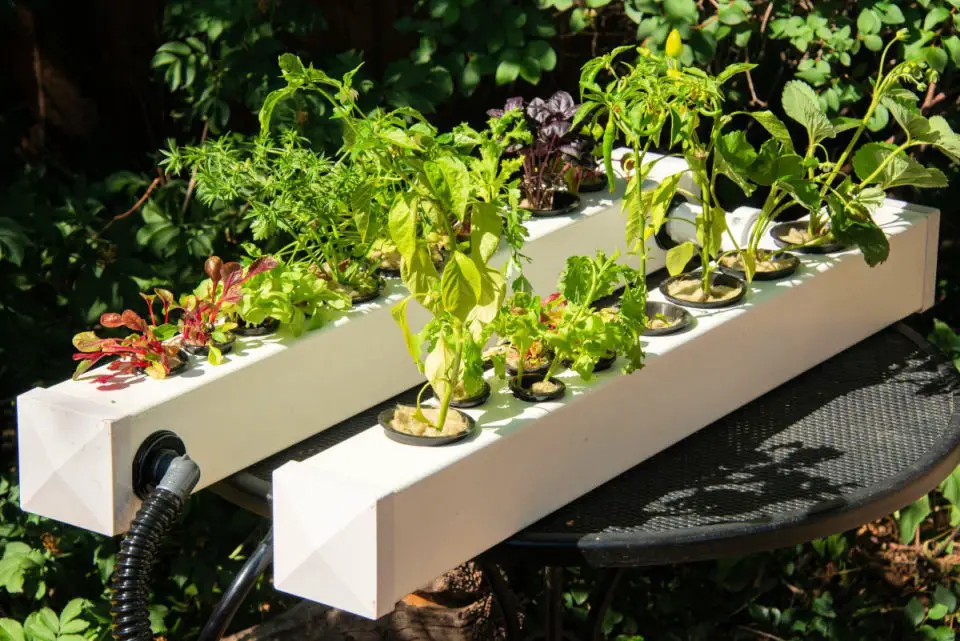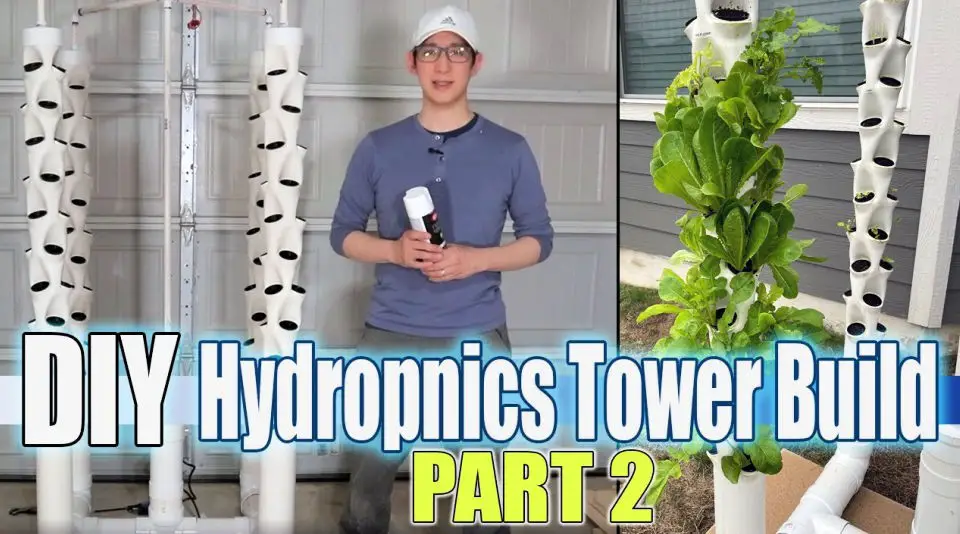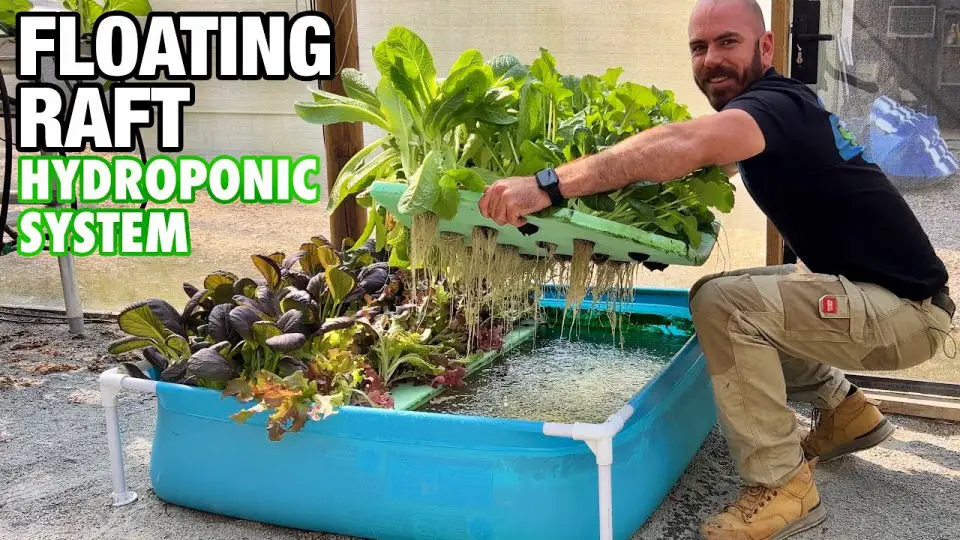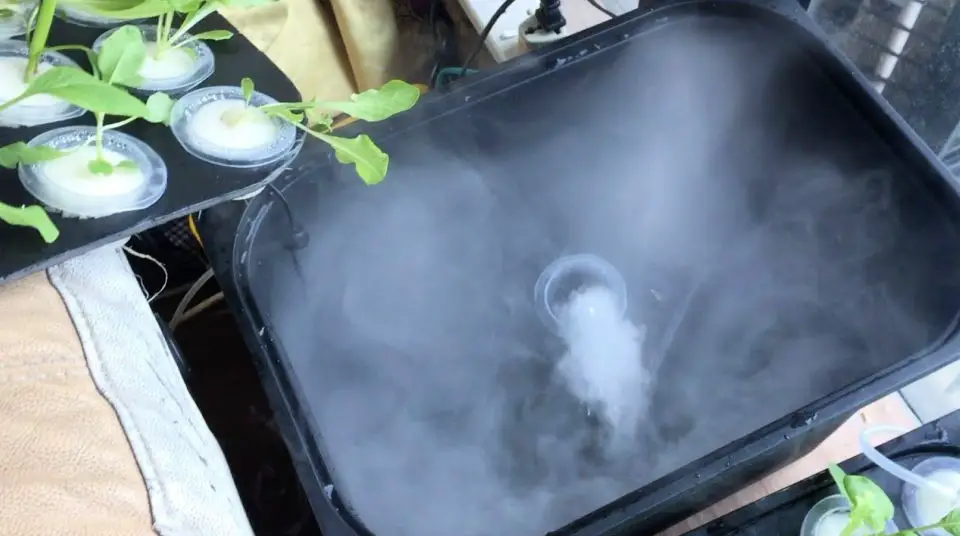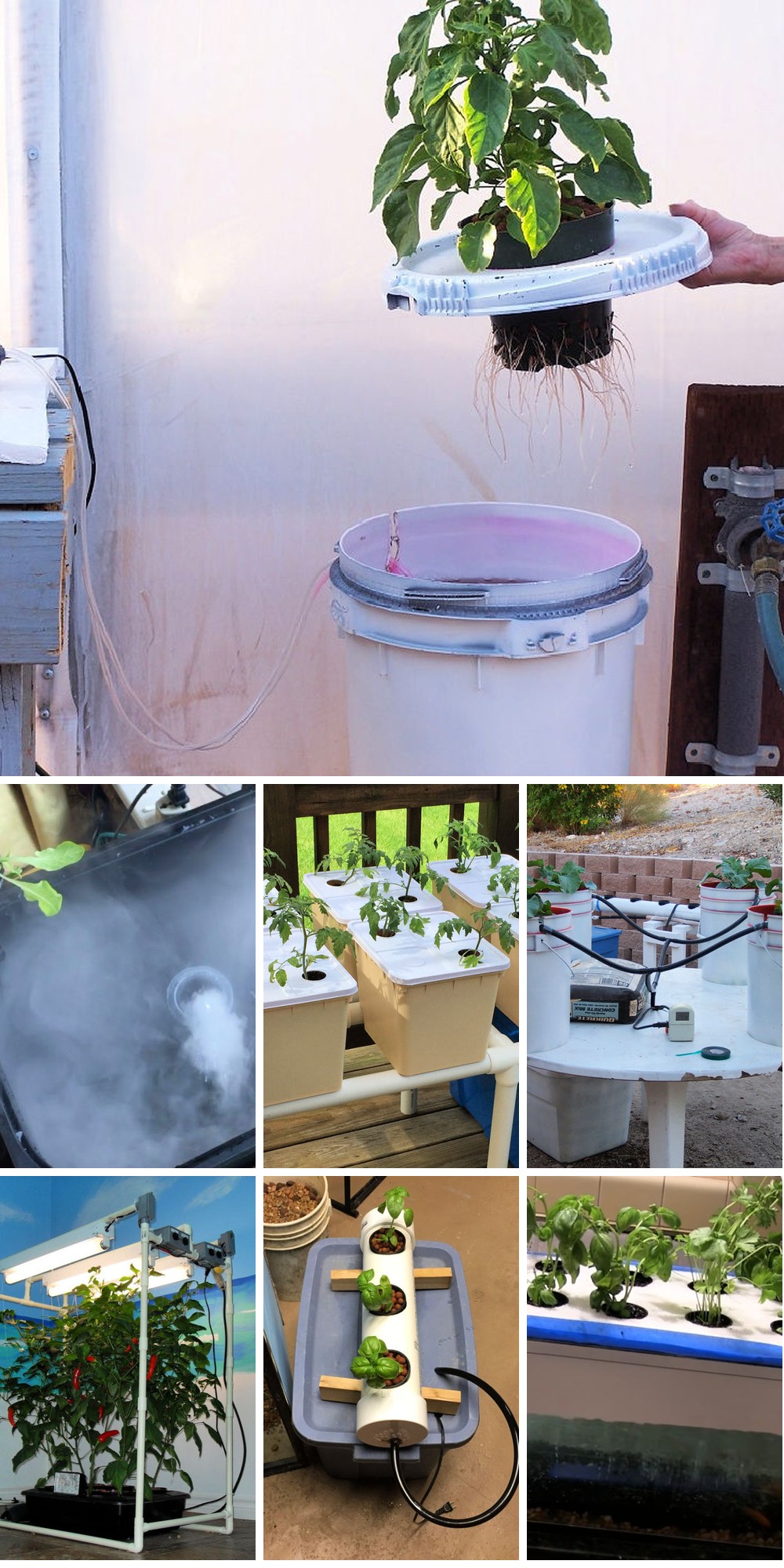
Hydroponics is transforming the way we approach gardening, offering a soil-free solution that overcomes traditional farming challenges. With 15 easy DIY systems, individuals can grow their own food or stunning plants efficiently and sustainably. This guide delves into the fundamentals of hydroponics, its benefits, and how it works, making it accessible to gardeners with varying levels of expertise. Whether you’re a curious novice or an experienced green-thumber, this introduction provides key insights into choosing the right system for your space, commitment level, and plant preferences. By exploring essential factors like nutrient solutions, pH balance, and lighting requirements, we’ll set you up for success in your hydroponic journey, empowering you to create thriving gardens in unconventional spaces.
Introduction to Hydroponics
Hydroponics offers an innovative approach to plant cultivation, substituting soil with a nutrient-rich water solution that directly provides sustenance to the plants. This method not only boasts impressive efficiency but also showcases a profound commitment to environmental sustainability by utilizing less water than traditional farming methods and accommodating versatile placement opportunities.
What is Hydroponics?
Hydroponics is an innovative method of cultivation that bypasses traditional soil-based growth altogether. Instead, it relies on nutrient-rich water solutions to support the development of roots and stems. By submerging plant roots in a carefully crafted liquid medium, hydroponic systems provide plants with everything they need to thrive, from essential nutrients to optimal moisture levels. This approach has been proven effective for cultivating a diverse range of crops, including leafy greens, fragrant herbs, vibrant flowers, and even hearty vegetables.
Benefits of Hydroponic Gardening
Hydroponic gardening offers a plethora of benefits when compared to traditional soil-based cultivation. One of its most notable advantages is its remarkable water conservation abilities, utilizing up to 90% less H2O than conventional gardens. This is largely due to the controlled environment and lack of evapotranspiration, which reduces the need for irrigation.Another significant advantage hydroponic systems have over their traditional counterparts is their space efficiency. By eliminating the need for extensive root growth, you can pack more plants into a smaller area, making it an ideal solution for urban or indoor gardening setups.In terms of plant growth rates, hydroponics tends to outperform soil-based methods by 30-50%. This accelerated development enables farmers and gardeners alike to enjoy a bountiful harvest in a relatively short period.Furthermore, with the advent of indoor hydroponic systems, year-round cultivation becomes a reality. Regardless of the weather outside, you can still grow fresh produce and enjoy the fruits of your labor 365 days a year.Finally, one of the most appealing aspects of hydroponics is its reduced need for herbicides. With fewer weeds to contend with, you’ll spend less time and resources on pest control, allowing you to focus on what really matters – nurturing your plants and enjoying the benefits they provide.
How Does Hydroponics Work?
In hydroponic cultivation, plants rely on a tailored environment that meets their fundamental needs, minus the soil. The root system is suspended within an inert medium like perlite, rockwool, or clay pellets, allowing for efficient nutrient uptake and water circulation. A controlled water pump delivers a precisely formulated nutrient solution to the roots, providing everything necessary for optimal growth.
Is Hydroponics Right for You?
Hydroponics offers an inclusive and innovative approach to gardening, catering to both novice and seasoned enthusiasts alike. Its versatility is particularly appealing for those with limited outdoor space or challenging soil conditions. Moreover, it serves as a valuable educational tool for teaching students about plant growth and the importance of sustainable practices.
By embracing hydroponics in your gardening endeavors, you’re opting for a pioneering path that harmonizes with eco-friendly principles. This approach not only fosters a greener future but also allows you to relish the satisfaction of cultivating fresh, homegrown produce. As you delve into the realm of hydroponics, you’ll discover the thrill of soil-less gardening and its many benefits.
Types of Hydroponic Systems
As you delve into the realm of hydroponics, you’ll come across a multitude of systems, each boasting its distinct design and advantages. Familiarizing yourself with these setups is crucial for selecting the most suitable option for your do-it-yourself venture.
Main Hydroponic System Types
Hydroponic systems come in various forms, each with its unique characteristics. The wick system is the simplest, utilizing no moving parts. A wick connects the nutrient solution to the growing medium, passively transporting water and nutrients to the plant roots, promoting healthy growth. In contrast, Deep Water Culture (DWC) involves suspending plants in a solution of nutrient-rich, oxygenated water. An air pump maintains circulation, providing the roots with essential oxygen and fostering rapid development. Nutrient Film Technique (NFT) is another efficient method that uses a continuous flow of nutrient solution running over the roots of plants placed in a sloped channel. While it requires slightly more setup and maintenance, NFT proves effective in water usage. The most advanced system, aeroponics, takes a different approach by misting the roots with a nutrient solution while they hang in the air. This method allows for excellent oxygen exposure and nutrient absorption, resulting in exceptional plant growth.
Choosing the Right System
When it comes to growing your own herbs and vegetables, several factors come into play. One crucial consideration is space – Wick systems and deep water culture (DWC) are ideal for smaller areas, whereas nutrient film technique (NFT) and aeroponics may require more room to accommodate their unique setups.Another important factor is budget. Wick systems are a cost-effective option, while aeroponics may be on the higher end due to the need for specialized equipment. This consideration can help you determine which system is most feasible for your gardening endeavors.Lastly, the type of plants you wish to grow also plays a significant role. Leafy greens tend to thrive in most systems, but fruiting plants might prefer the stability provided by DWC or the efficiency of NFT.
Setting Up Your System
Begin your hydroponic journey with a straightforward approach. Start by experimenting with a basic system like wick or DWC (deep water culture) to get familiarized with the process. Next, gather all the necessary components: containers, growing media, nutrients, and potentially pumps or air stones, depending on your chosen setup. As you proceed, regularly monitor and adjust your system’s pH and nutrient levels to ensure optimal plant growth. By grasping the fundamentals of hydroponic systems, you’ll be able to select the most suitable one for your unique needs and preferences, ultimately leading to a rewarding growing experience.
Choosing the Right Hydroponic System for Your Space
When it comes to cultivating a thriving hydroponic garden, selecting the right system is paramount. The key lies in finding a setup that harmoniously blends functionality with spatial constraints. In order to achieve this synergy, you’ll need to consider several factors, including your available space, budget, and desired level of control over environmental conditions.
Consider Your Space
When embarking on the journey of hydroponics, start by evaluating the space at your disposal. This may involve assessing a compact indoor nook or a more expansive outdoor patio. Regardless of the size, there’s a hydroponic system designed to thrive in even the most modest environments, waiting to be discovered.
Indoor vs. Outdoor
When it comes to growing your own plants indoors or outdoors, the type of system you choose depends on the space available and the level of control you want to exert over the environment. For indoor spaces, consider compact options like wick or small deep water culture (DWC) systems that don’t require direct sunlight to thrive. These systems are ideal for apartments, offices, or homes where natural light is limited. In contrast, outdoor spaces offer more freedom to set up larger and more complex hydroponic systems, such as nutrient film technique (NFT) or aeroponic setups that can take advantage of natural light and fresh air. With a little creativity, you can create a thriving hydroponic garden in even the smallest of outdoor spaces.
Assess Your Commitment
Hydroponic gardening is characterized by varying levels of involvement, with different systems demanding distinct amounts of monitoring and maintenance. While some setups are more forgiving and ideal for newcomers, others necessitate a greater degree of engagement to achieve optimal results.
Plant Choices
When selecting a hydroponic system, the type of plants you plan to cultivate is a crucial factor. For instance, leafy greens like lettuce and kale thrive in most systems due to their versatility. On the other hand, fruiting plants such as tomatoes and cucumbers may require additional support structures and more expansive space to accommodate their growth habits. By considering your plant selection upfront, you can ensure the optimal system design for maximum yields.
Budget Considerations
When it comes to setting up an indoor gardening system, your budget will undoubtedly influence the level of complexity you can achieve. On one end of the spectrum, simple wick systems are accessible and cost-effective options, whereas more advanced methods like aeroponics may necessitate a greater financial investment.
Environmental Control
When cultivating indoor plants, it’s crucial to consider the environmental conditions that will influence their well-being. Temperature, humidity, and light are key elements that require careful consideration. Think about how you’ll control these factors to create an optimal setting for your plants’ growth.
Future Expansion
When designing your hydroponic setup, consider the potential for expansion in the future. A modular system allows for greater flexibility when adding more plants or upgrading to larger capacities. As you think about your current needs, also keep in mind how they might evolve over time. By taking a holistic approach and balancing factors such as available space with your gardening goals and lifestyle, you can select a hydroponic system that effectively meets your present requirements while also providing a solid foundation for future growth.
How to Build Your Own DIY Hydroponic System
While the idea of building a hydroponic system at home may seem overwhelming, it’s actually a highly effective and space-conscious means of cultivating herbs and vegetables. This step-by-step guide will demystify the process, guiding you through the creation of a fundamental hydroponic setup utilizing readily available materials from your local hardware store. Our journey begins now!
Materials Needed:
To construct the trellis system, you will need a variety of materials and tools. A store-bought trestle is a good starting point, as it provides a solid base for your structure. Additionally, you will require gutter brackets in sets of eight, wood screws in packs of five with 25mm lengths, and a drill driver with a Phillips bit to secure the components together. For measuring and leveling purposes, bring along a tape measure, pencil, and spirit level. If you plan on adding a decorative touch, consider purchasing primer and water-based paint, which can be applied once the structure is complete. The PVC pipes required are 110mm in diameter, with a total length of six meters needed to construct the framework. To shape and smooth the pipes, have a hacksaw, sandpaper, and utility knife on hand. A hole saw attachment with a 64mm diameter will also come in handy during the construction process. For connecting the PVC pipes together, you’ll need end caps in sets of ten and T-piece fittings in sets of one. The conduit piping required is 20mm in diameter, with six elbow bends and male screw adapters to facilitate connections. To complete the structure, you’ll also need PVC weld, a spade bit with a 19mm diameter, and pipe cutters for trimming the pipes to size. Finally, consider investing in hydroponic-friendly fertilizer, such as NutriFeed, and a submersible water pump capable of pumping 400 liters per hour. Clear tubing will be necessary for connecting the water pump to the rest of the system.
Step-by-Step Guide:
As you begin building your DIY hydroponic system, start by preparing the structure. If desired, paint the trestle for added durability against water exposure and ensure it’s completely dry. Next, attach four gutter brackets to the trestle, spaced evenly and level to support the PVC pipes. Use wood screws and a drill to secure them, repeating the process on the opposite side with a slight downward angle to facilitate water flow.With your structure in place, move on to preparing the PVC pipes. Cut four 1-meter lengths from your PVC pipes, which will serve as channels for your plants. Mark evenly spaced points along each pipe and drill holes using a 64 mm hole saw attachment. Clean up any rough edges with sandpaper and a utility knife.To complete the end caps, drill a 19 mm hole in seven of them to accommodate the water flow system. Attach male screw adapters using PVC weld for a secure fit.Now it’s time to assemble your system. Attach the end caps to the PVC pipes, ensuring they’re properly oriented for water flow. Use PVC weld to ensure a snug fit. Next, set up the water reservoir by connecting one PVC pipe to a T-piece at the bottom trestle level. This will serve as the base for your submersible pump.Link the pipes together using conduit piping and elbow bends, creating a pathway for the water to flow from top to bottom and back to the reservoir.Finally, install the submersible pump in the reservoir and connect it to the top PVC pipe using clear tubing. Ensure all connections are secure and that there’s a clear path for the pump cable. Fill your system with approximately 30 liters of water and mix in hydroponic fertilizer according to the package instructions.
Video Tutorial
To supplement this guide with a hands-on approach, I recommend checking out our video tutorial on building a hydroponics system. The visual walkthrough provides an in-depth look at each step of the process, making it easier to understand and replicate. With the right tools and knowledge, you can turn any space into a thriving garden, no matter how small. The sense of accomplishment that comes from growing your own food is unmatched, whether you’re cultivating leafy greens or juicy tomatoes.
Nutrient Solutions and PH Balance
To create an optimal environment for your plants in a hydroponic system, you need to consider two key factors beyond just adequate watering: providing a balanced nutrient solution and maintaining the ideal pH level. This is crucial for promoting healthy growth and maximizing yields. Here’s how to effectively manage these essential components of your hydroponic setup.
Understanding Nutrient Solutions
Hydroponic systems rely heavily on nutrient solutions to provide plants with the necessary elements for growth. These solutions mimic the role of soil by delivering essential macronutrients and micronutrients. The foundation of these solutions lies in three primary macronutrients: nitrogen, phosphorus, and potassium, which are crucial for plant development. In addition to these major players, nutrient solutions also require a range of micronutrients, including iron, manganese, and zinc, despite their smaller quantities. While the amounts may vary, these microminerals play a vital role in supporting overall plant health.
Preparing Your Nutrient Solution
When it comes to feeding your crops, start by using a commercially available hydroponic nutrient mix that’s designed to provide a well-rounded blend of essential nutrients for most plant species. To ensure optimal results, meticulously follow the manufacturer’s guidelines for mixing the formula with water. This will help you create a consistent and nourishing solution for your plants.
The Role of pH
When cultivating plants, it’s crucial to maintain a suitable pH level in their nutrient solution, as this directly impacts their ability to absorb essential nutrients. The ideal range for most plant species lies between 5.5 and 6.5. To ensure the optimal conditions for your crops, regular pH testing is necessary. This can be achieved through the use of pH test strips or a digital pH meter. If the pH reading indicates that it’s either too high or too low, you’ll need to make adjustments by applying pH up or down solutions to bring it within the desired range.
Monitoring and Adjusting
For optimal growth, it’s crucial to regularly monitor and adjust the key parameters of your nutrient solution. This includes checking the pH level and electrical conductivity (EC) on a weekly basis. The EC reading provides valuable insight into the concentration of nutrients in the water, allowing you to make informed adjustments if necessary. If the EC level is found to be too high or too low, take action by fine-tuning the nutrient concentration to ensure your plants receive the ideal balance of elements.
Tips for Success
To optimize the growth of your hydroponic plants, it’s crucial to monitor and record key metrics such as pH and EC levels at regular intervals. This data will enable you to track the performance of your system and make informed decisions about adjustments and maintenance. Additionally, establish a routine for cleaning your equipment and replacing nutrient solutions every few weeks to prevent the accumulation of salts and bacteria that can harm your plants. By taking a proactive approach to managing your system’s pH levels and nutrient solutions, you’ll create an environment that fosters healthy growth and maximizes the potential of your hydroponic crop.
Lighting Requirements for Hydroponic Systems
In the realm of hydroponic gardening, proper lighting plays a pivotal role in ensuring optimal plant growth, particularly for indoor set-ups where natural sunlight may be limited. To guarantee your plants receive the necessary illumination to thrive, consider the following strategies.
Understanding Plant Lighting Needs
Hydroponic plants rely on light as a fundamental component for carrying out photosynthesis, a crucial process where they transform light energy into chemical energy necessary for their growth. The importance of light in hydroponics cannot be overstated, as it plays a critical role in promoting healthy plant development.
Types of Grow Lights
For those just starting out or with smaller-scale gardens, fluorescent lights are a great option. Not only do they conserve energy, but they also provide sufficient light for low-light plants like herbs and lettuce to thrive. For more advanced growers or those looking for even greater efficiency, LED grow lights offer an attractive alternative. With their extended lifespan and customizable spectrum, these lights can be tailored to meet the specific needs of a wide range of plants. For larger hydroponic setups, high-intensity discharge (HID) lights provide the power needed to support robust growth. Available in two forms – Metal Halide (MH) for vegetative stages and High-Pressure Sodium (HPS) for flowering and fruiting stages – these lights are well-suited for growers seeking maximum yields.
Determining Light Intensity and Duration
The lighting needs of your plants are determined by two key factors: intensity and duration. Intensity refers to the brightness of the light, measured in lumens, which should be tailored to the specific type of plants you’re growing. On the other hand, duration is a matter of how long your plants receive light each day. Most plant species thrive when provided with 14-16 hours of light per day. To replicate natural daylight patterns and ensure consistent growth, consider using a timer to regulate your light cycles.
Positioning Your Lights
When it comes to lighting, it’s crucial to strike a balance between providing sufficient illumination for your plants and avoiding excessive heat that can cause damage. Start by positioning the lights at a distance that allows them to shine bright enough to support healthy growth, but not so close that they scorch the leaves. As your plants grow and mature, you’ll need to adjust the distance to maintain optimal conditions. In addition to keeping the lights at the right distance, it’s also important to ensure that the light coverage is even and comprehensive, guaranteeing that every plant in the growing area receives the necessary amount of illumination without any hotspots or dark spots.
Monitoring and Adjusting
To optimize plant response in a hydroponic setup, pay attention to signs of over- or under-lighting. Leaf burn or elongated stems can indicate that the light intensity or duration needs adjustment. Furthermore, regular rotation of plants is crucial to ensure consistent exposure to light. By carefully selecting grow lights and fine-tuning their settings, you can recreate the ideal conditions of natural sunlight to support the growth and development of your hydroponic plants.
Plant Selection and Care in Hydroponics
In order to achieve success in a hydroponic garden, it’s crucial to select the optimal plants for your system and provide them with the appropriate care. By following these guidelines, you can guarantee that your plants are perfectly suited and well-maintained within your hydroponic setup.
Selecting Plants for Hydroponics
When designing a hydroponic system, the choice of plants is crucial. To ensure success, consider three key factors when selecting plants for your setup. First, think about the growth habit of the plant and how it will interact with your system’s design. Next, consider the nutrient requirements of each plant and aim to group those with similar needs together for simplified feeding. Finally, think about the harvest time of each plant and group those with similar times together for efficient management. For beginners, ideal plants include lettuce, spinach, and herbs like basil and mint that are easy to grow and require minimal maintenance. As you gain more experience, you can move on to more challenging crops like tomatoes, peppers, and cucumbers.
Caring for Your Hydroponic Plants
To guarantee the well-being and performance of your plants, it’s crucial to adopt proper care practices. This includes a few key strategies:
Firstly, make sure to monitor and adjust the nutrient solutions, ensuring that the concentration and pH levels are optimal.
Another essential aspect is regular pruning. Remove any dead or yellowing leaves to stimulate new growth and prevent disease from taking hold.
Finally, keep a watchful eye out for pests and manage them promptly using non-toxic methods to maintain a healthy environment.
Ensuring Healthy Growth
To cultivate a thriving hydroponic garden, it’s essential to strike a balance between providing individual plants with sufficient space to flourish and supporting those that need a little extra help. This means giving each plant enough room to grow without competing for light or nutrients, while also utilizing trellises or stakes to guide vining plants along the right path. Additionally, regular observation is crucial in identifying any potential issues early on, allowing you to address them promptly and prevent more serious problems from arising. By taking these factors into account and being mindful of your plants’ unique needs, you’ll be well on your way to enjoying a lush and productive hydroponic garden that brings you joy and satisfaction.
Troubleshooting Common Problems in Hydroponics
When it comes to maintaining a successful hydroponic garden, being proactive in identifying and resolving common issues is crucial. Even the most well-designed and well-maintained systems can experience setbacks, but with the right approach, you’ll be able to keep your plants thriving. To ensure your garden remains healthy and productive, it’s essential to develop a solid understanding of what to look for and how to address potential problems.
Identifying Common Issues
When evaluating the health of your plants, it’s essential to consider potential underlying issues that may be hindering their growth. One common problem is nutrient deficiencies, which can manifest as yellowing leaves or stunted plant growth. Similarly, root rot can also cause problems, characterized by brown and slimy roots that often indicate poor oxygenation or overwatering. Additionally, keep an eye out for any signs of pests or diseases, such as insects infesting your plants or unusual spots on the leaves that may signal an infection.
Solutions for Healthy Plants
To optimize plant growth, it’s crucial to strike a balance in nutrient provision. This involves monitoring and adjusting pH and EC levels regularly to ensure the right blend of essential elements. Additionally, maintaining adequate oxygenation is vital to prevent root rot and promote healthy development. This can be achieved through the strategic use of air stones or pumps. Furthermore, implementing integrated pest management strategies, such as introducing beneficial insects or utilizing organic pesticides, helps to manage pests effectively without compromising plant health.
Preventative Measures
To keep your hydroponic garden thriving, it’s essential to implement a routine maintenance schedule. This includes cleaning your system regularly to prevent the buildup of harmful pathogens that can harm your plants. Additionally, controlling environmental factors such as temperature and humidity is crucial in creating an environment less conducive to pests and diseases. It’s also vital to conduct regular plant inspections to catch any early signs of trouble before they escalate into more severe issues. By staying proactive and addressing any problems promptly, you can ensure that your hydroponic garden remains a productive and enjoyable endeavor. The key to success lies in prevention, and dedicating a little time each day or week to maintenance can go a long way in maintaining the health and well-being of your plants.
Advancements in Hydroponic Technology
As the realm of hydroponics continues to advance at a rapid pace, novel innovations are transforming the method of cultivating plants sans soil. Among the most notable developments are cutting-edge technologies that are streamlining the process, amplifying yields, and rendering hydroponics more practical for everyday growers.
Cutting-Edge Developments
Hydroponic innovations have transformed the way we cultivate crops by introducing cutting-edge technologies that enhance monitoring, lighting, and automation capabilities. This new era of smart farming is revolutionizing plant growth through real-time insights into nutrient levels, pH, temperature, and humidity. The integration of advanced sensor systems allows for precise control over these critical factors, ensuring optimal growing conditions are consistently maintained.
LED lighting innovations have further elevated the game by providing a comprehensive spectrum of light that closely mimics natural sunlight. This results in healthier plant growth, as plants are able to photosynthesize more efficiently and thrive under this simulated sunlight.
Moreover, automation has taken hydroponic farming to new heights with self-regulating systems capable of managing feeding schedules, water cycles, and even harvesting crops. This level of precision and control has streamlined the process, minimizing labor requirements and maximizing yields.
The Impact of Technology on Hydroponics
The integration of technology into hydroponic gardening has numerous advantages. One significant benefit is the substantial boost to efficiency. By automating various processes, individuals can free up time and energy for other aspects of their lives. This newfound efficiency also translates to improved plant health, as precise monitoring allows for optimal conditions to be maintained, ultimately yielding higher quality crops. Furthermore, technology’s impact on accessibility has made hydroponics more appealing and user-friendly, leading to a surge in adoption among those seeking sustainable gardening options.
Embracing the Future
As hydroponic technology progresses, we’re likely to see even more groundbreaking innovations. Not only will these developments boost the effectiveness of hydroponic gardening, but they’ll also contribute to a more sustainable food production landscape. By staying abreast of these advancements, you can seamlessly integrate them into your system, keeping your garden at the cutting edge of modern agricultural practices.
Frequently Asked Questions About Hydroponics
In this exhaustive resource, we’ll cover a wide range of hydroponics-related queries, delving into the fundamentals, advantages, and expert advice to ensure your journey in hydroponic gardening is filled with success.
What is hydroponics?
Innovative methods of cultivation like hydroponics have revolutionized the way we grow plants. By substituting traditional soil-based systems with nutrient-rich water solutions, hydroponics enables plants to absorb essential minerals directly through their root systems. This streamlined approach often translates into accelerated growth rates and increased crop yields.
How does hydroponics save water?
One of the most significant advantages of hydroponic systems is their ability to conserve water by recycling it. This approach allows for the same water to be utilized repeatedly to feed crops, resulting in a staggering reduction of up to 90% when compared to conventional soil-based farming methods.
Can I convert my traditional garden to a hydroponic system?
Converting a traditional garden to a hydroponic system is a feasible process that requires careful planning and execution. It begins by establishing a reliable hydroponic setup, followed by a deliberate transfer of plants to the new system, taking precautions to minimize any potential shock that may affect their growth.
What plants can I grow with hydroponics?
While many plant species thrive in a hydroponic setup, certain varieties are particularly well-suited for newcomers to this method of cultivation. Lettuce, herbs, spinach, and strawberries fall into the former category, offering a low-maintenance and forgiving environment for beginners to hone their skills. As growers gain more experience, they can experiment with more challenging yet rewarding options like tomatoes, peppers, or cucumbers.
Do hydroponic plants grow faster than soil-grown plants?
Hydroponic plants tend to flourish at a rate comparable to that of their soil-grown counterparts due to the precise delivery of essential nutrients and water straight to their roots, unhindered by any resource competition.
Is hydroponic food as nutritious as soil-grown food?
When it comes to nutrition, hydroponic produce is often on par with its soil-grown counterparts. In fact, hydroponics may even have an edge in terms of consistency, as the precise control over nutrient levels allows for tailored optimization for each individual plant’s needs.
What is the best hydroponic system for beginners?
When it comes to choosing the right hydroponic system for newcomers, two options consistently stand out as ideal choices: Deep Water Culture (DWC) and Wick systems. These methods are popular among beginners because they offer a perfect blend of simplicity and low-maintenance demands.
How often should I change the nutrient solution in my hydroponic system?
To maintain optimal growing conditions, it’s essential to refresh your hydroponic system’s nutrient solution every 2-3 weeks. This interval allows for the prevention of nutrient imbalance and the accumulation of salts and other byproducts that can harm your plants’ development. By performing this regular maintenance task, you’ll be able to promote healthy growth and yields in your hydroponic garden.
Can hydroponic systems be organic?
Hydroponic systems can be seamlessly integrated into an organic farming setup, as long as you opt for organic nutrient solutions and steer clear of synthetic pesticides and herbicides in your operation.
What are the common problems in hydroponics and how can I solve them?
While no gardening system is completely problem-free, hydroponics presents its own unique set of challenges. Issues like nutrient deficiencies, pH imbalances, and pest infestations can arise if not properly monitored and addressed. To overcome these hurdles, it’s essential to maintain a consistent check on your nutrient solution, ensuring the ideal pH level is met, and employing eco-friendly pest control methods when necessary.
By mastering these fundamental aspects of hydroponics, you’ll gain valuable insights and develop the confidence needed to successfully cultivate a thriving hydroponic garden. Ultimately, the key to success lies in cultivating knowledge and a keen understanding of your plants’ specific needs.
15 Homemade DIY Hydroponic Systems
Explore a diverse range of 15 innovative and easy-to-create homemade DIY hydroponic systems that can be implemented in your own indoor gardening space. Whether you’re just starting out or looking to take your plant-growing game to the next level, these versatile setups cater to varying levels of complexity and provide endless possibilities for cultivating your favorite plants from the comfort of your home.
Solar Thermally Pumped Hydroponic System
Elevate your gardening game with a low-cost, high-yield homemade hydroponic system that’s as eco-friendly as it is effective. By leveraging the power of the sun, this innovative solar thermally pumped hydroponic system circulates water without relying on electricity-driven pumps. This DIY approach not only reduces your carbon footprint but also saves you money in the long run.For those committed to sustainable living and cultivating plants in harmony with nature, this setup is an ideal choice. By harnessing the sun’s energy, you’ll be growing your greens while doing your part for the environment. And if you’re looking for a detailed guide on how to set up this system, head over to Instructables for a step-by-step tutorial. Whether you’re a seasoned gardener or just starting out, this eco-conscious hydroponic solution is sure to delight.
Make a Dutch Bucket Hydroponic System
Embrace the eco-friendly world of hydroponic gardening by learning how to create a DIY Dutch Bucket System that boosts your cultivation skills. Whether you’re striving for self-sufficiency or seeking to optimize small spaces for year-round gardening, this system offers unparalleled flexibility. By setting up a Dutch Bucket, you’ll be able to grow an array of crops with ease, unlocking the full potential of your garden. As you delve into this comprehensive guide, you’ll gain valuable insights on how to construct an efficient and water-conscious garden that nurtures healthier, faster-growing plants. With these essential building blocks in place, you’ll embark on a fulfilling journey towards sustainable gardening, reaping the rewards of a thriving harvest.
DIY Indoor DWC Hydroponics System
Elevate your indoor gardening experience with a Deep Water Culture (DWC) hydroponics system that simplifies the process and yields impressive results. This comprehensive DIY guide provides step-by-step instructions for building a self-sustaining setup that excels under artificial lighting, perfect for cultivating banana peppers and other plants. Notably energy-efficient, this system operates on just 65 watts of power, translating to a daily cost of mere 9 cents. The guide also offers valuable insights into modifications for enhanced efficiency, making it an ideal choice for beginners looking to grow their own fresh produce at home, regardless of the season.
Kratky Mason Jar Hydroponic System Method
Create a thriving indoor hydroponic garden without breaking the bank with our comprehensive guide. Learn how to set up a Kratky mason jar system that’s perfect for growing herbs, lettuces, and veggies year-round. This low-maintenance method requires minimal equipment and is surprisingly easy to get started. With a focus on simplicity and affordability, we’ll walk you through the essential steps – from understanding the unique non-circulating hydroponic method developed by Bernard A. Kratky to selecting the right materials for your project. Whether you’re new to indoor gardening or looking for a hassle-free way to grow plants indoors, this DIY approach is an ideal solution. For more detailed guidance and valuable insights, follow the link to Sher She Grows.
How to Make a NFT Hydroponic System
To embark on a DIY hydroponics journey, I recommend crafting a Nutrient Film Technique (NFT) system with Instructables’ comprehensive guide. This step-by-step resource caters perfectly to garden enthusiasts seeking to delve into the world of hydroponics. By breaking down each process into an accessible and straightforward manner, you’ll be equipped with the necessary knowledge to construct a space-efficient system that fosters healthy plant growth year-round.
Hydroponic Drip System Using 5 Gallon Bucket
To embark on a sustainable and efficient DIY hydroponic adventure, follow our expert-guided steps to create a drip system that’s perfect for growing up to 4 plants – or more, with adaptable bucket sizes. With all necessary components easily obtainable for under $100, this budget-friendly option is ideal for home gardeners looking to dip their toes into the world of hydroponic gardening. By securing materials locally and preparing your buckets for plant growth, you’ll be well on your way to creating a setup that effectively blocks light, preventing algae growth and maintaining an optimal flow. Start your journey today and discover the joys of hydroponic gardening!
Basic Ebb and Flow Hydroponic System
Immerse yourself in the world of DIY hydroponics by setting up a basic ebb and flow system using materials you might already have at home. This straightforward approach is perfect for growing large plants like the Cherokee Purple Tomato, which thrive in environments where water, nutrients, and oxygen are delivered efficiently. By leveraging a fountain pump and a Raspberry Pi for timing, you can create an optimal conditions with minimal effort invested.
This guide caters to innovators and hobbyists alike, offering a step-by-step approach to hydroponics that’s adaptable to your available resources. Whether reusing 5-gallon buckets or repurposing tools at hand, this system provides a nurturing environment for your plants to flourish in.
DIY 5 Gallon Bucket DWC system
Create a budget-friendly hydroponic system that delivers impressive results without sacrificing your wallet. With a few simple steps, you can build a reliable five-gallon bucket DWC (deep water culture) hydroponic setup perfect for growing small to medium-sized plants efficiently and cost-effectively. This DIY guide leverages readily available materials and straightforward techniques, ensuring a seamless transition into the world of hydroponics.
Homemade Hydroponic Window Farm
Immerse yourself in the world of DIY hydroponics and unlock the secrets to cultivating a thriving soilless garden within your own four walls. This innovative approach allows you to harness the power of water, nutrients, and sunlight to nurture your herbs, vegetables, and flowers indoors, utilizing minimal space and resources. Perfect for urban dwellers with limited outdoor areas or apartment residents, hydroponic window farming is an eco-friendly solution that brings the joy of gardening directly into your living room, kitchen, or any space with natural light. With a detailed guide available on Instructables, you can start reaping the benefits of fresh produce grown right in front of you, transforming the way modern gardeners think about and engage with their green spaces.
Making a Hydroponic Herb Garden
Growing a DIY hydroponic garden has never been easier, thanks to the step-by-step guidance provided by Family Handyman. With this comprehensive guide, you’ll be able to assemble a hydroponic system that perfectly suits your available space. Not only is it an innovative way to cultivate healthy, thriving plants indoors, but it’s also ideal for those looking to bring more greenery into their lives without the necessity of soil.
Vertical PVC Pipe Hydroponic System
To embark on a journey of sustainable and efficient gardening, learn how to construct a vertical hydroponic system comprising four towers through an easy-to-follow DIY guide. This comprehensive instructional piece takes you through each step with the help of fundamental tools such as PVC pipes, pipe connectors, a heat gun, and PVC glue. Ideal for those seeking to optimize their gardening space while minimizing its footprint. The instruction is designed to prioritize practicality and sustainability, making it accessible to anyone interested in hydroponics. Begin your vertical farming project today by gaining a solid understanding of the basics involved in assembling your hydroponic towers.
Easy DIY Aeroponics Garden Tower
Transform your gardening experience with this comprehensive DIY guide to building a 4-tower hydroponic and aeroponic garden system. Discover how to scale up your single-tower setup, accommodating an impressive 132 plants or more, all while enjoying the benefits of year-round fruit and vegetable production. From cutting PVC pipes to securing plant pods, this step-by-step tutorial covers every detail, ensuring a stable, efficient, and low-maintenance build that’s as productive as it is visually stunning.
Building a Floating Raft Hydroponic System
Unleash a verdant haven in your own space by following our step-by-step guide on building a low-fuss, budget-friendly floating raft hydroponic system that doesn’t require any electricity. Perfect for cultivating leafy greens, this passive approach offers a sustainable and eco-conscious gardening solution. With the aid of extruded foam panels providing buoyancy and selecting the right grow media for your plants, you’ll be on your way to harvesting fresh produce with minimal effort required. This beginner-friendly guide is ideal for families looking to take control of their food production and create a thriving hydroponic garden that’s easy to maintain.
Cheap and Easy Aquaponics for Under $35
Transform your sustainable gardening experience with the MIgardener’s comprehensive guide to setting up a budget-friendly Aquaponics/Hydroponics system. This informative tutorial demystifies the process of cultivating a thriving garden, yielding fresh and nutritious produce right in your own backyard, without breaking the bank.
Home DWC Hydroponics and Fogponics
Transform your indoor space into a thriving garden oasis with DIY home DWC hydroponics and fogponics systems, complete with an adjustable grow light that’s designed to optimize plant growth. This innovative system combines the benefits of deep water culture and aeroponics, offering a more efficient and environmentally friendly way to grow a variety of vegetables in even the smallest of spaces – no soil required! The setup process is surprisingly easy, requiring only one tank and minimal maintenance. However, it’s essential to monitor water temperatures to ensure optimal growing conditions. For a comprehensive guide on building this system and maximizing plant growth with LED lights, be sure to check out our instructional video.
Conclusion:
Mastering a DIY hydroponic system is an achievable feat, requiring only a solid grasp of hydroponics fundamentals, a thoughtful selection of equipment for your available space, and a commitment to acquiring the necessary materials and expertise. As you navigate this journey, remember that the rewards are substantial: from preserving precious water resources to accelerating plant growth rates and the ability to cultivate plants year-round, regardless of external climate conditions.
As you embark on this exciting venture, keep in mind the critical importance of well-formulated nutrient solutions, precise pH balancing, suitable illumination, and the careful selection and care of your chosen plant species. With persistence and dedication, you’ll soon reap the rewards of your very own DIY hydroponic system.

